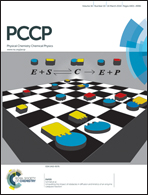Fast charging of lead–acid batteries enabled by high-pressure crystallization
Abstract
Lead–acid batteries were electrically charged and discharged more quickly under high pressures than under atmospheric pressure due to high-pressure crystallization induced by the former condition. High-pressure crystallization can generate extremely small crystals with large supersaturation and small mass transfer rates. Crystals of PbSO4 on the electrodes were observed by scanning electron microscopy, and the crystals became smaller when the operative pressure increased, even when faster charging was carried out. Additionally, the amount of electrical current transferred to the electrodes was larger for electrodes charged and discharged at high pressure. This high-pressure charge–discharge process is expected to improve the quality of lead–acid batteries.


 Please wait while we load your content...
Please wait while we load your content...